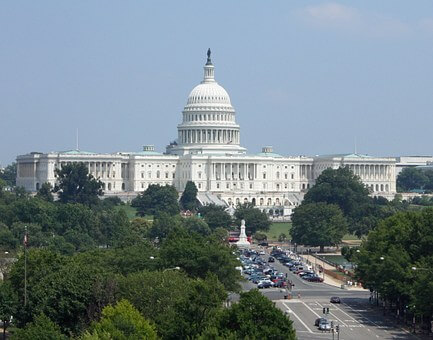Democratic House Committee leaders have announced a bold new target to achieve a 100% clean economy by 2050. The Committee’s plan to produce net-zero greenhouse gas pollution by 2050 is consistent with the global scientific community’s consensus that meeting this target is necessary to avoid the most catastrophic effects of the climate crisis.

Hearings and stakeholder meetings will take place this week about legislation to combat the climate crisis and strengthen the clean-energy economy.
The plan was introduced this week by Energy and Commerce Chairman Frank Pallone, Jr. (D-NJ), Environment and Climate Change Chairman Paul Tonko (D-NY) and Energy Subcommittee Chairman Bobby L. Rush (D-IL).
“Communities across the country are suffering from historic flooding, raging wildfires, increasingly severe storms, extreme heat and persistent droughts,” said Pallone. “The climate crisis is here, and it requires serious federal leadership that’s up for the challenge.”
Pallone added: “Today, we are announcing a plan that will help us produce comprehensive legislation to reach a 100% clean economy by 2050. This is an ambitious but necessary goal, and we’re committed to working hand-in-hand with all stakeholders across the country to get the job done.”
Over the coming months, the Energy and Commerce Committee will hold a series of hearings and stakeholder meetings to hear the best ideas for developing a deep decarbonization strategy. The stakeholder meetings will be designed to ensure every affected community, industry and stakeholder has a seat at the table. The outcome of this process will be comprehensive climate legislation to address the climate crisis and facilitate the transition of the U.S. economy to net-zero greenhouse gas pollution by 2050.
“There is no question that climate change presents a grave threat to America’s health, safety and security, but rising to meet this challenge will also create great opportunities building a clean energy and climate-resilient economy that reduces harmful air and water pollution and the health costs and human suffering that come with them,” Tonko said. “Much has changed in the decade since Congress last considered a comprehensive climate plan, including transformative advances in clean energy technology and a far deeper understanding of climate science and the cost of continued inaction.”
The hearing series begins today, with the Environment and Climate Change Subcommittee’s hearing on Pathways for Decarbonizing the U.S. Economy. In the upcoming months, the hearings will continue in both the Environment and Climate Change Subcommittee and the Energy Subcommittee. Upcoming hearings will include discussions on reducing industrial emissions, reducing transportation emissions, modernizing the electric grid, economy-wide solutions and others.
“With record heatwaves, wildfires, flooding, and drought occurring more and more frequently in every region of the country, it is clear to the American people that now is the time for Congress and the federal government to act to address the issue of climate change,” Rush said. “The plan that we are unveiling here today demonstrates that the Energy and Commerce Committee understands the need for action and we are ready to move boldly to aggressively tackle this issue. As someone who represents a district whose constituents are disproportionately impacted by the symptoms of climate change.”
In 2018 alone, the U.S. experienced 14 natural disasters costing a combined $91 billion. According to the U.S. Government’s own Fourth National Climate Assessment, lost wages due to extreme temperatures are projected to rise over the coming decades, reaching $160 billion per year by the end of the century, while the cost of lost property from coastal flooding is projected to reach $1 trillion.
The window for limiting the worst effects of these climate-related disasters is rapidly closing. According to the United Nation’s Intergovernmental Panel on Climate Change, avoiding the most catastrophic outcomes requires cutting carbon pollution to net zero by 2050.
Filed Under: News, Policy




